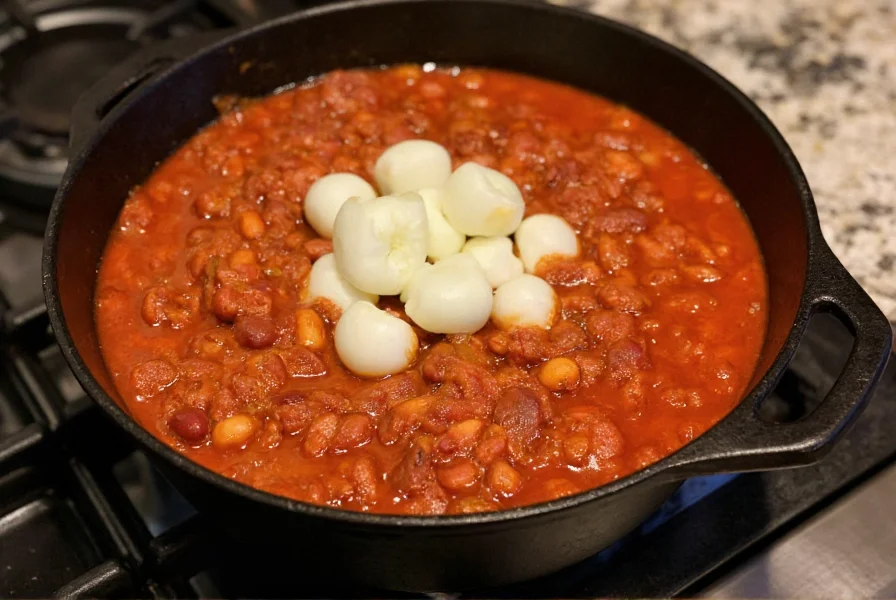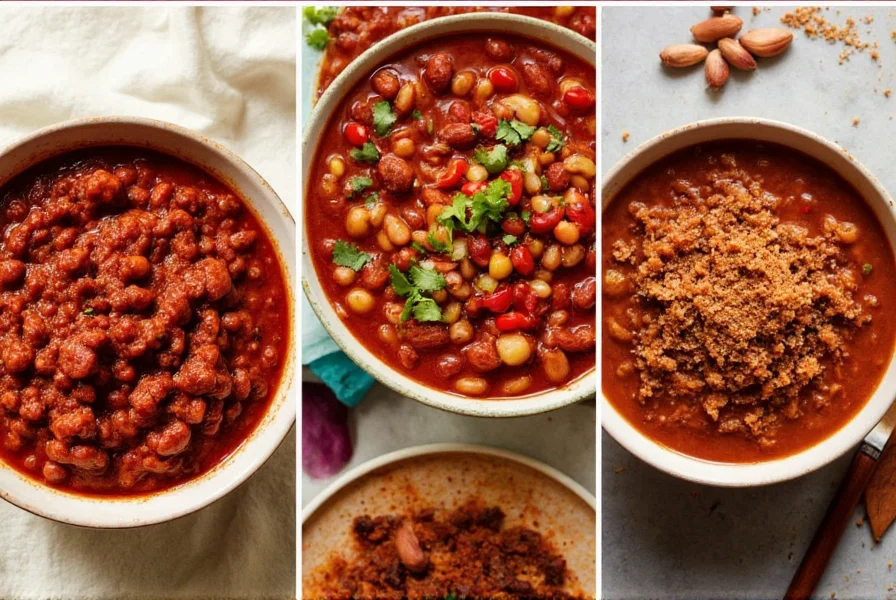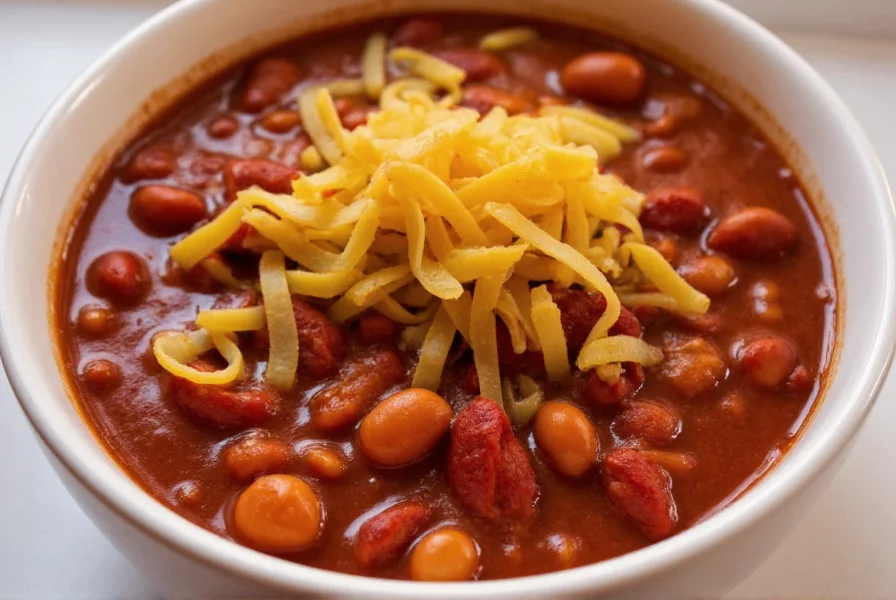The History Behind Beanless Texas Chili
Understanding why Texas chili excludes beans requires exploring its origins. Texas chili evolved from 19th-century chili con carne (chili with meat) recipes brought by Mexican immigrants working on cattle trails. Cowboys and ranch hands needed portable, protein-rich meals that could simmer for hours over open fires. Beans weren't part of this frontier cuisine—they'd spoil quickly without refrigeration and required separate cooking.
The modern debate intensified in 1977 when the Texas Legislature officially designated chili without beans as the "State Dish of Texas." Purists argue beans dilute the complex flavors of carefully selected chili peppers and slow-cooked meat. Organizations like the International Chili Society maintain strict "bean-free" rules for competition categories.
Essential Components of Authentic Texas Chili
True Texas chili focuses on three pillars: quality meat, proper chili varieties, and technique. Unlike Cincinnati or Midwestern chili, which often include beans, chocolate, or cinnamon, Texas-style prioritizes meat-forward richness.
| Component | Traditional Texas Approach | Non-Traditional Additions |
|---|---|---|
| Meat | Coarse-ground beef or cubed chuck roast | Ground turkey, beans, or fillers |
| Chili Base | Rehydrated dried chilies (ancho, guajillo, pasilla) | Canned chili powder alone |
| Liquid | Beef stock or water | Tomato sauce, beer, or coffee |
| Cooking Method | Slow simmer (4+ hours) without stirring | Quick stovetop preparation |
Classic Texas Chili Recipe Without Beans
This authentic recipe follows Central Texas traditions. Yields 6 servings.
Ingredients
- 2 lbs beef chuck roast, cut into 1/2-inch cubes
- 4 dried ancho chilies
- 3 dried guajillo chilies
- 2 dried pasilla chilies
- 1 large yellow onion, finely diced
- 4 garlic cloves, minced
- 2 tbsp cumin seeds
- 2 cups beef stock
- Salt to taste
Preparation Steps
- Toast dried chilies in a dry skillet for 30 seconds per side until fragrant but not burnt.
- Place chilies in hot water for 20 minutes to rehydrate, then blend into smooth paste.
- Sear beef cubes in cast-iron pot until browned on all sides.
- Add onion and garlic, cooking until translucent.
- Stir in chili paste, cumin seeds, and beef stock.
- Simmer uncovered for 4-6 hours, skimming fat occasionally.
- Season with salt before serving.

Avoiding Common Texas Chili Mistakes
Many home cooks unintentionally compromise authenticity. Here's what to avoid when making traditional Texas chili without beans:
- Using only chili powder: Authentic Texas chili relies on rehydrated dried chilies for complex flavor. Chili powder alone creates a one-dimensional taste.
- Over-stirring: Traditional pitmasters never stir Texas chili after the initial mix. Stirring breaks down meat fibers and creates a mushy texture.
- Adding tomatoes: While common in other regional styles, tomatoes aren't part of authentic Texas recipes and can make the chili too acidic.
- Rushing the process: True Texas chili requires minimum 4 hours of slow simmering to develop the characteristic deep red color and rich flavor.
Variations Within Tradition
Even within bean-free parameters, Texas chili has regional interpretations:
- San Antonio style: Features a thicker consistency with more chili pepper varieties
- Austin style: Often includes a touch of coffee for depth (still bean-free)
- West Texas campfire chili: Made with coarsely ground meat for quick preparation
These variations maintain the essential beanless foundation while reflecting local preferences. The unifying factor remains respect for the meat and chili peppers as primary flavor sources.

Why Beans Don't Belong in Texas Chili
The anti-bean stance isn't just tradition—it's about flavor science. Beans contain starches that absorb flavorful fats and oils essential to chili's complexity. When making authentic Texas chili without beans, the rendered beef fat carries chili flavors throughout the dish. Beans also introduce sweetness that conflicts with the earthy, smoky notes of properly prepared chili peppers.
As chili judge and historian Robert Garcia explains: "Texas chili is a meat dish that happens to include chili peppers, not a bean dish with added spice. The texture and flavor profile changes completely when beans enter the equation."











 浙公网安备
33010002000092号
浙公网安备
33010002000092号 浙B2-20120091-4
浙B2-20120091-4